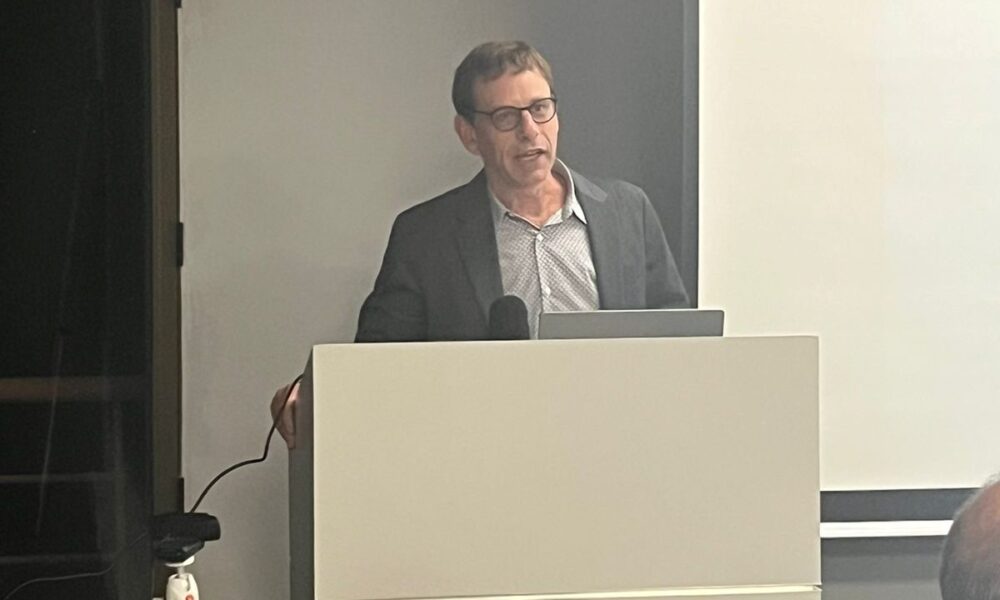World
Interwar pogroms in Ukraine foreshadowed the Holocaust

Most historians consider the Holocaust to have started with Adolf Hitler’s rise to power in 1933 and to have ended after World War II in 1945. Research has revealed, however, that thousands of Jews died in violent pogroms (ethnic riots) in what is today Ukraine between 1918 and 1921, foreshadowing the tragedies to come.
This research was shared by History and Judaic Studies professor Jeffrey Veidlinger from the University of Michigan in a hybrid event on 17 August, co-hosted by the Jewish Democratic Initiative, Limmud, and the Kaplan Centre for Jewish Studies at the University of Cape Town.
Veidlinger’s latest prize-winning book is In the Midst of Civilized Europe: The Pogroms of 1918-1921 and the Onset of the Holocaust. He explained how Russian territory was engulfed in a complex civil war between the communist Red Army, the White Army, nationalist groups such as the Ukrainian Nationalist Army, and with local gangs and militia also active in this period. His research has unearthed about 2 000 separate violent incidents in which approximately 100 000 Jews died in these four years.
The conventional view is that the Final Solution “came out of the blue”, said Veidlinger, and that the situation for Jews suddenly changed with the election of Hitler as führer in Germany in 1933. Veidlinger and his research team travelled regularly to the shtetls and towns of Ukraine between 2001 and 2010 to interview elderly Yiddish speakers. “They remembered the violence and mass murder that took place before the Holocaust, 20 years before Nazi Germany invaded the Soviet Union,” he said. “This shows that the Holocaust wasn’t the first time that systematic, genocidal violence was unleashed on the Jews.”
About 90% of Jews were urbanised, while just 10% of the general Ukrainian population lived in cities and towns. Jews were shopkeepers, barbers, tailors, and other artisans, while the non-Jewish Ukrainians were overwhelmingly rail-workers, peasants and farmers. These socio-economic divides made Jews targets as it was believed they had money, gold, and jewels in the desperate wartime conditions. It built upon centuries of antisemitism and a long history of pogroms.
Veidlinger showed video interviews with survivors of this period, who spoke about their families being murdered and how as children they miraculously escaped death themselves. One pogrom lasted eight days in the Tulchyn district; others were over in a few hours. In Tulchyn, local thugs from surrounding farms murdered the shtetl’s Jews until a Polish priest convinced them to desist.
In Khmelnytskyi, the violence was concentrated into four hours, and was carried out by military units of the Ukraine National Army. Between 1 000 and 3 000 Jews were systematically killed. Historians have hundreds of documents filled out by local rabbis naming the murdered members of their congregations. Geographically, the pogroms occurred in wide areas across Ukraine.
“What came of these pogroms?” asked Veidlinger. “They have been almost forgotten today, but were much talked about in the 1920s and 1930s.” An article in the 1920s in The New York Times, for instance, said these pogroms were the first step to eliminating the six million Jews in Poland and Ukraine. Jewish leaders went to Versailles in 1919 and succeeded in getting minority rights enshrined in the constitutions of Poland and Romania. “Of course, this didn’t work in protecting Jews. They did a lot, but it wasn’t enough” he said. This period also marked the emergence of the mass Zionist movement, and the emigration of millions of Jews from greater Russia, mainly to the United States. The latter resulted in a legislative clampdown on Eastern European emigrants by successive US governments.
Veidlinger also showed how Jews were demonised in cartoons in this period. The charismatic Jewish Bolshevik, Leon Trotsky, was the face of the Red Army, and was depicted as evil, dirty, and bloodthirsty. Another cartoon showed the Red Army soldiers and sailors following Jesus Christ bearing his cross, reviving the false trope that Jews – equated with Bolsheviks – killed Christ. Jews and Bolsheviks were seen as one and the same. This helped rally support for the White Army.
The country was in turmoil. Jews moved to large cities like Moscow and St Petersburg, and about 500 000 Jews fled to Germany as they feared the spread of Bolshevism. “The Nazi Party was also an anti-immigrant party – this can be seen in their newspapers from the time,” Veidlinger said.
Tragically, he said, Ukraine today is again gripped in violence that begets more violence as political authority breaks down. Do we ever learn from history?
